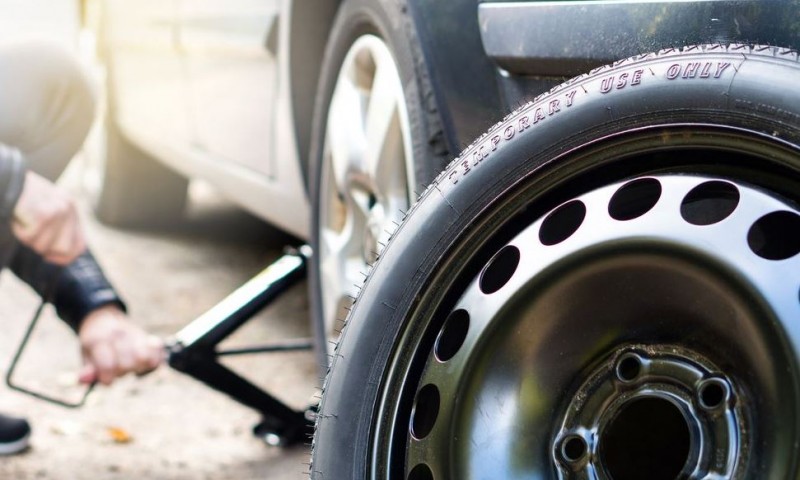
When it comes to vehicle safety, one crucial but often overlooked aspect is the condition of your car's tires. These rubber companions are your only point of contact with the road, and neglecting their maintenance can lead to disastrous consequences on the road. In this article, we'll explore the warning signs that indicate it's time to change your car tires to avoid potential accidents.
The most apparent sign that your tires need replacement is the presence of tread wear indicator bars. These are small, raised bars located in the grooves between the tread blocks. If these bars become flush with the tire's surface, it's a clear signal that your tire has reached the legal limit for tread depth, which is typically 2/32 of an inch.
Inadequate tread depth can severely compromise your tire's grip on the road, especially in wet or slippery conditions. Using a tread depth gauge, check if your tires have less than 4/32 of an inch of tread remaining. If so, it's time to replace them.
Examine the sidewalls of your tires for any visible cracks, cuts, or bulges. These issues weaken the structural integrity of the tire and increase the risk of a blowout, especially at high speeds. If you notice any sidewall damage, replace the tire immediately.
Uneven wear patterns on your tires can indicate alignment or suspension issues. Check for signs of uneven wear by running your hand across the tread. If it feels uneven or you notice distinct wear patterns, it's time to have your vehicle's alignment and suspension checked and replace the affected tires.
Tires have a limited lifespan, even if they have sufficient tread depth. Rubber deteriorates over time, especially in extreme weather conditions. If your tires are over six years old, consider replacing them, regardless of their visual condition.
If you find yourself needing frequent tire repairs due to punctures, it's a sign that your tires may be too worn or damaged. Continuous patching can compromise their structural integrity, making them unsafe for the road.
Excessive vibration while driving, especially at higher speeds, can indicate tire balance or internal damage issues. If balancing doesn't resolve the problem, it's time to replace the tires.
If you find yourself frequently needing to inflate your tires, it could be due to slow leaks or damage. Inspect the tires and valve stems for any visible issues. If the problem persists, it's best to replace the tire.
Valve stems play a crucial role in maintaining proper tire pressure. If you notice any wear, cracks, or damage to the valve stems, replace them promptly to prevent air loss.
Bulges or blisters on the tire's surface indicate internal damage, often caused by hitting potholes or curbs. These weak spots can lead to sudden tire failure, so replace the tire immediately.
Unusual noises, such as thumping, squealing, or roaring, while driving can be a sign of tire issues. These noises may indicate tire damage or irregular wear, necessitating replacement.
Worn-out or underinflated tires can reduce your vehicle's fuel efficiency. If you notice a sudden drop in miles per gallon, it's worth checking your tires and replacing them if necessary.
Difficulty in steering, drifting to one side, or a feeling of instability while driving can be attributed to tire problems. If alignment and suspension checks don't resolve the issue, consider tire replacement.
Extreme temperature fluctuations can affect tire pressure. Regularly check your tire pressure during temperature changes to ensure they are properly inflated. Low tire pressure can lead to blowouts.
Modern vehicles are equipped with tire pressure monitoring systems (TPMS) that alert you to low tire pressure. If your TPMS warning light is illuminated, check your tire pressure, and if it persists, investigate the cause and replace the tires if necessary.
Exceeding the tire's load capacity can lead to excessive wear and reduced safety. Ensure your tires are appropriate for your vehicle's weight and load requirements.
Using summer tires in winter conditions or vice versa can be dangerous. Invest in seasonal tires for optimal safety and performance.
If you're uncertain about the condition of your tires, it's always advisable to consult a professional mechanic or tire expert for a thorough inspection and guidance on replacement.
Regular tire maintenance, including rotation, balancing, and alignment checks, can extend the lifespan of your tires and enhance safety.
In conclusion, your car's tires are a critical component of road safety. By being vigilant and attentive to these warning signs, you can ensure that your tires are in good condition and reduce the risk of accidents caused by tire failure. Ensure that your tires are always in top shape, and remember that safety on the road starts with proper tire care.
PM Modi Inaugurates International Lawyers' Conference in New Delhi
Apple Surpasses Samsung to Become India's Leading Smartphone Exporter
EU Reinstates USD400 Million Penalty Against Intel for Market Dominance Abuse